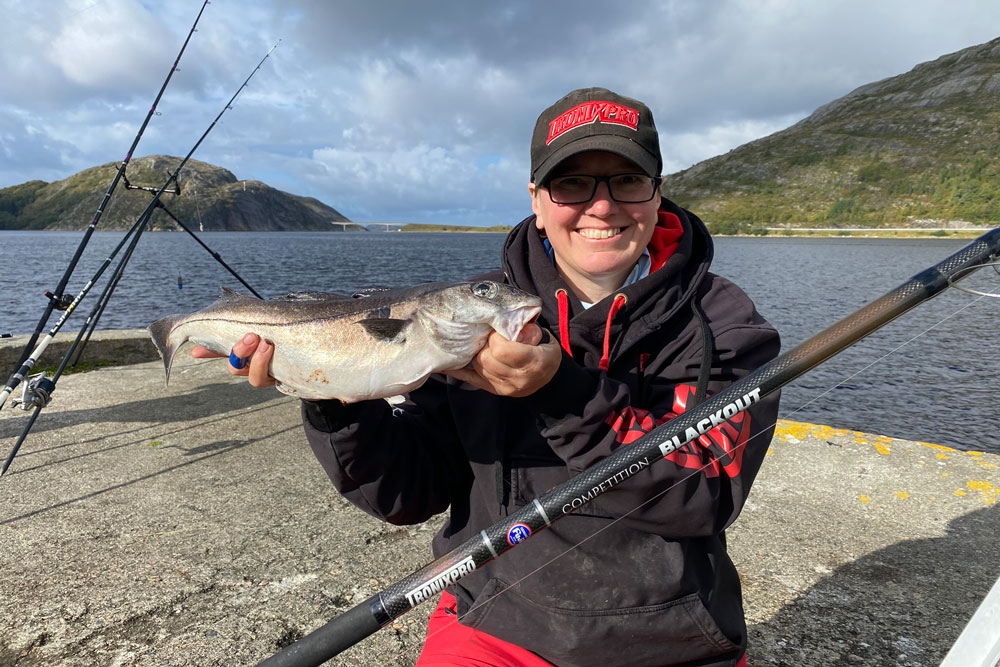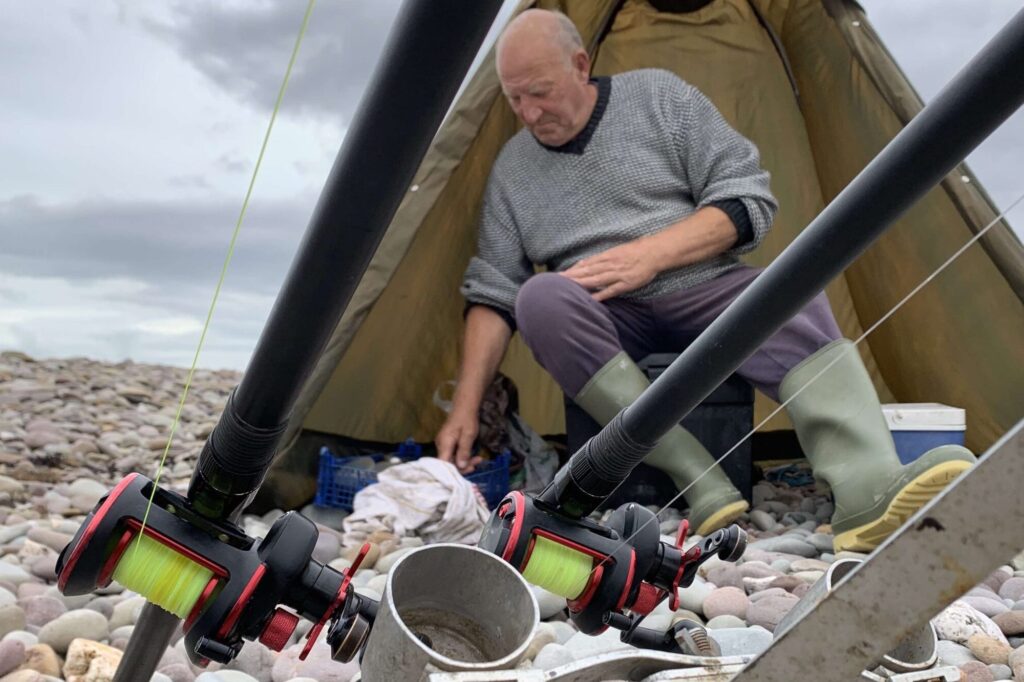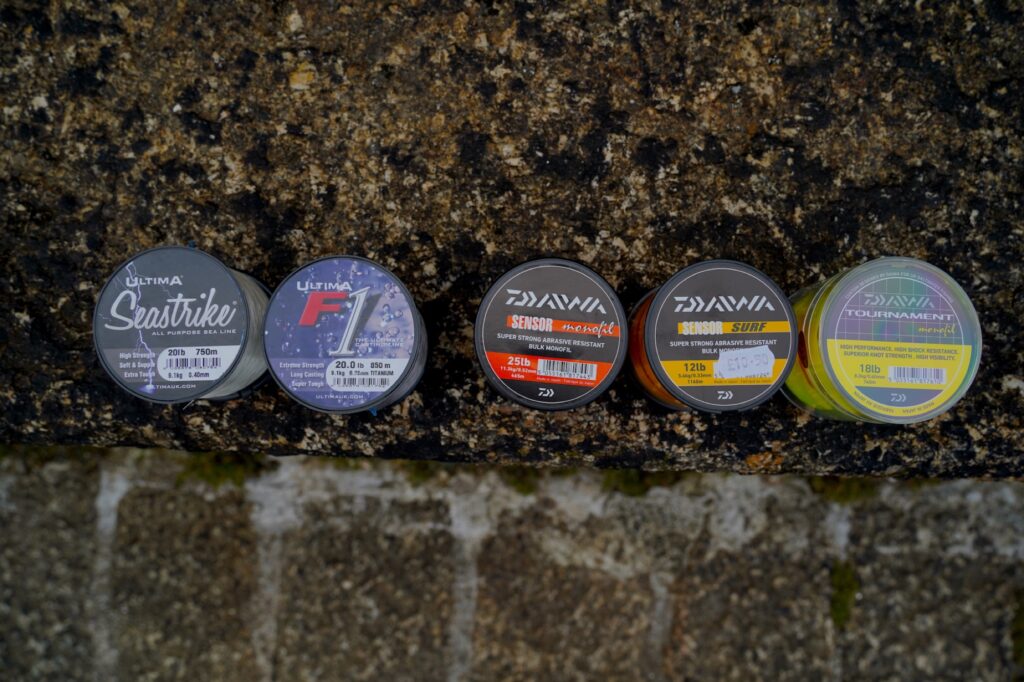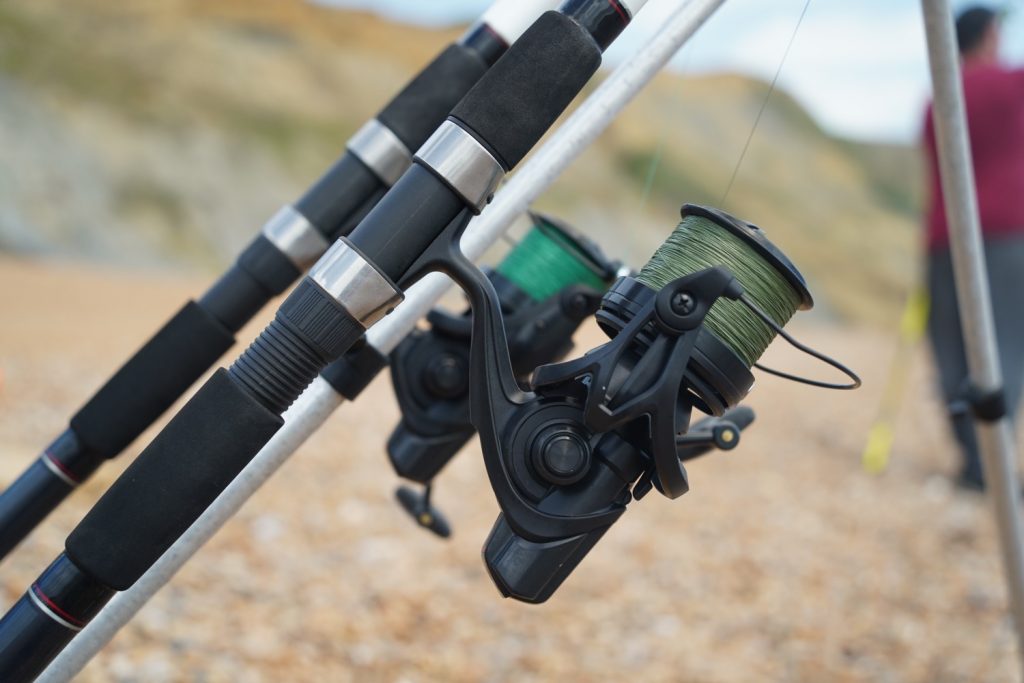Sea fishing baits explained
We will cover in detail each type of bait and how to rig it to give the best presentation to your target species. Bait presentation is more important for some species than others. It’s one of the most skilled parts of sea fishing. Rigging different baits on the hook so they don’t fall off and positioning the hook to maximise hook-ups is a bit of an art. Consider the mouths of bream, and how anything but a small hook, with the hook coming out the bottom of the bait, would result in radically fewer hook-ups. Or, the way that certain species can pull apart baits without getting hooked if you don’t use baiting elastic. Anyway, I’m getting ahead of myself – let’s dive in…
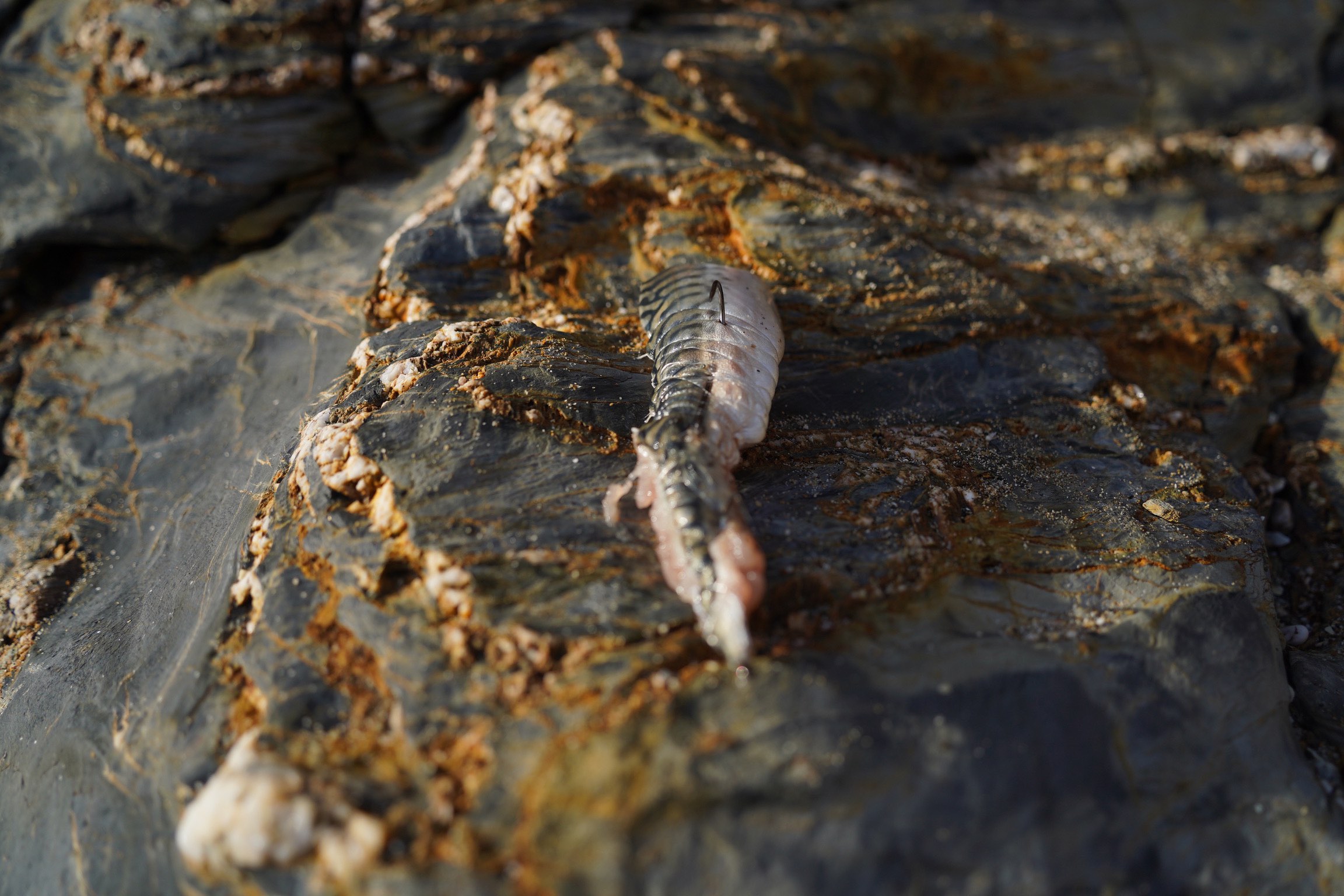
1. Mackerel
Mackerel is one of the most commonly used fish baits, although they are no longer as plentiful as they used to be, so that may start to change. Mackerel is prized for its high oil content and firm flesh. This makes it perfect for casting, as it withstand the impact with the water. Once it’s hit the water, this oily fish creates a slick in the water that fish can follow. It’s useful for catching a wide range of species, such as bass, rays, conger eels, bull huss, tope, and ling.
You can use a mackerel head and guts, sides or fillets. To enhance the scent trail, consider using slices of mackerel in bait cocktails with sandeel or squid. Freshly caught mackerel will give you better results as it is much rougher on the hook and harder for prey to pull off. However, frozen mackerel can still be effective and is readily available. If you are not using an oily fish bait but want to add an oily slick to help fish find your baits, try this stuff.
To use a mackerel head and guts, hook the head through the gills and the bait onto your hook. To use sides or fillets, cut them into desired pieces and thread onto your hook.

2. ‘Bluey’, herring & other oily fish baits
Other oily fish such as herring also make good baits, while Pacific saury (sold as bluey) has become popular in recent years. Any oily fish with firm flesh will make a good bait, such as this small herring (below) rigged on a break away clip down gripper lead.
Other less commonly used baits include sprats, pilchards and garfish.
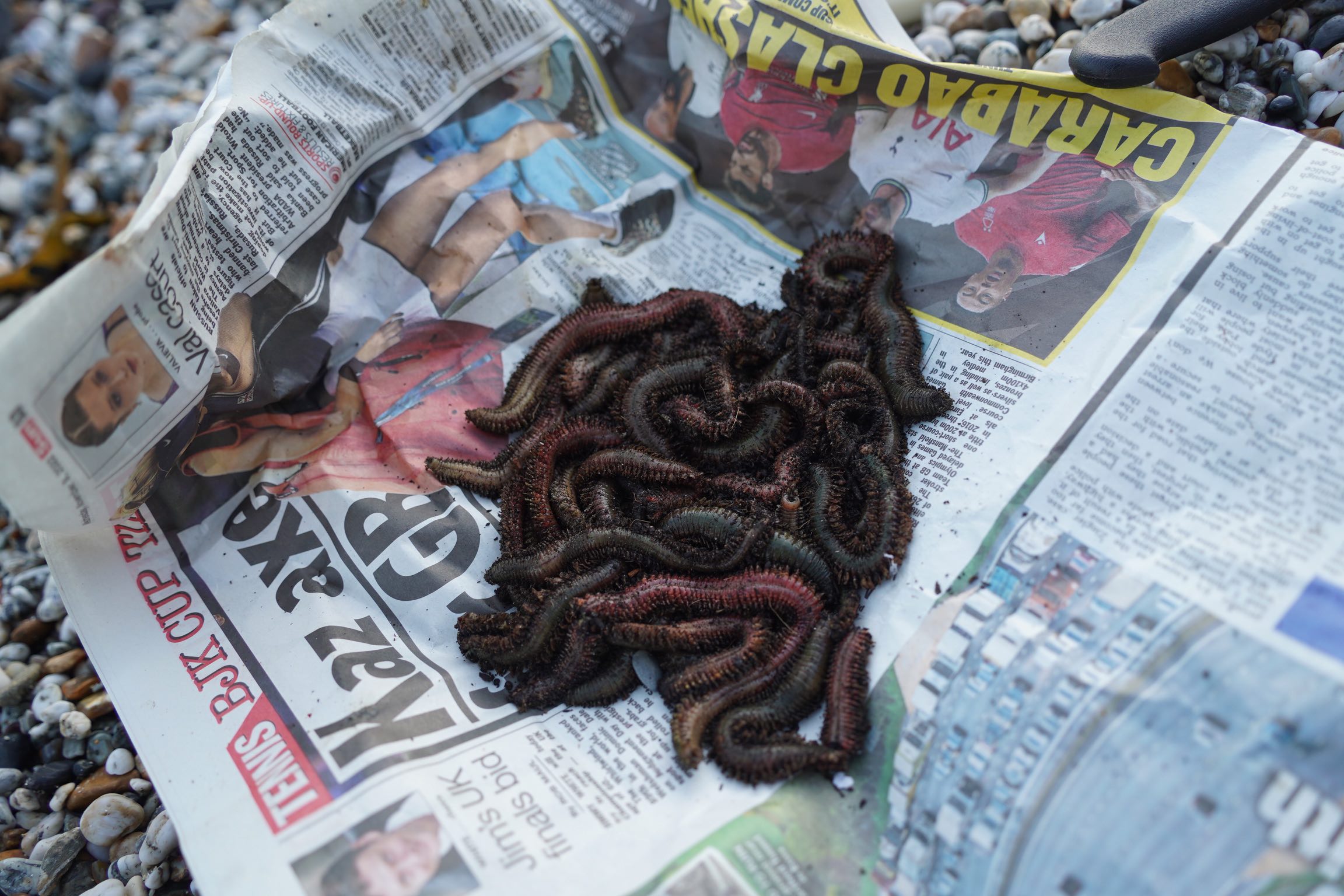
3. Ragworm
Ragworm are a popular and versatile bait for shore fishing, and attract a wide range of species such as plaice, sole, flounder, bass, pouting, and more. To ensure the best results, it’s essential to use fresh ragworms and keep them in cold and damp.
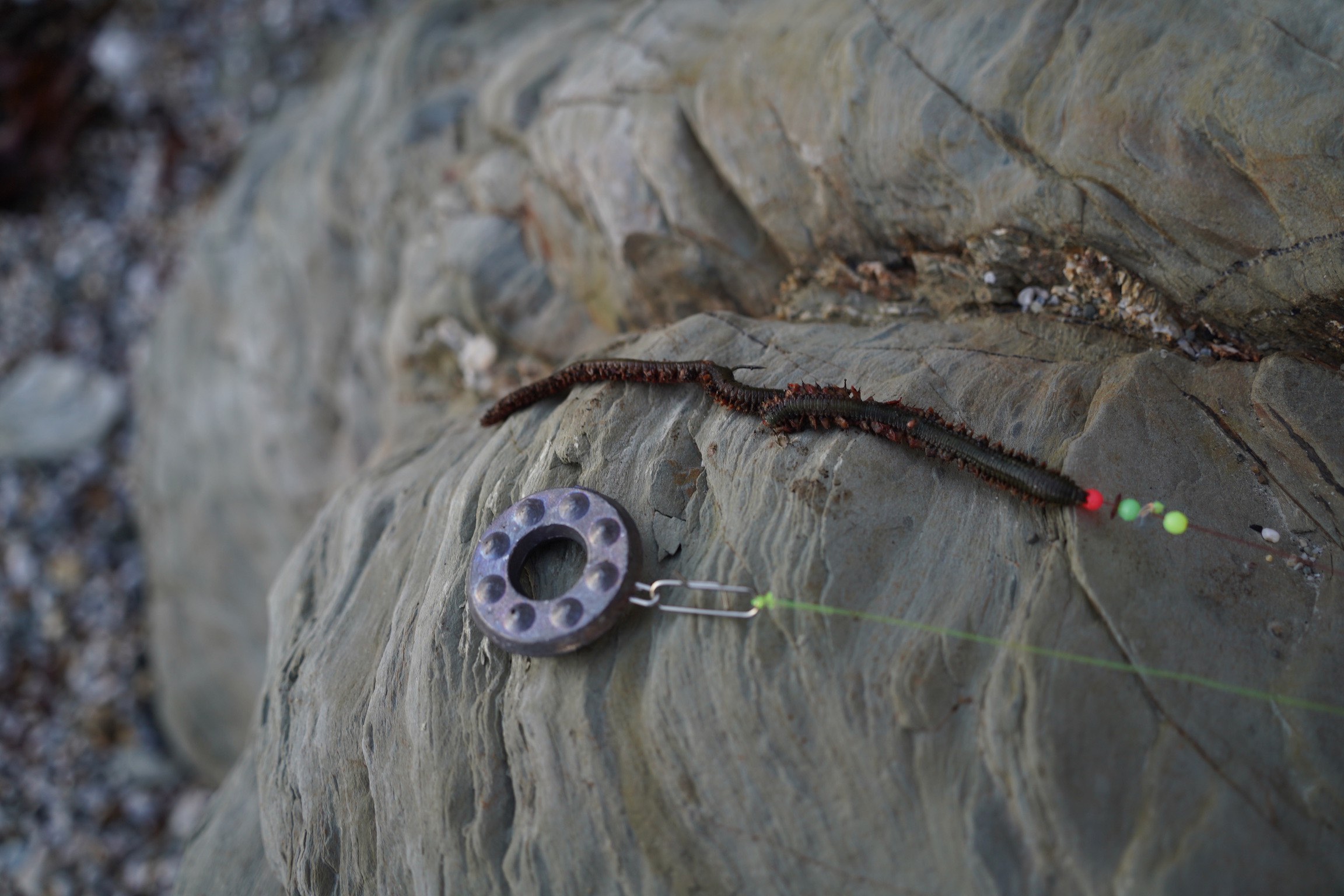
When baiting, hook the ragworms by the mouth and thread the worm down the shank of the hook, being mindful of the pincers. You could also use a baiting needle when rigging longer worms on long-shanked hooks. Ragworm do bite. Store the ragworms in cool and covered conditions, changing the newspaper wraps frequently to prevent dead worms from contaminating the rest. You can dig your own ragworm in estuary mudflats with a shovel.
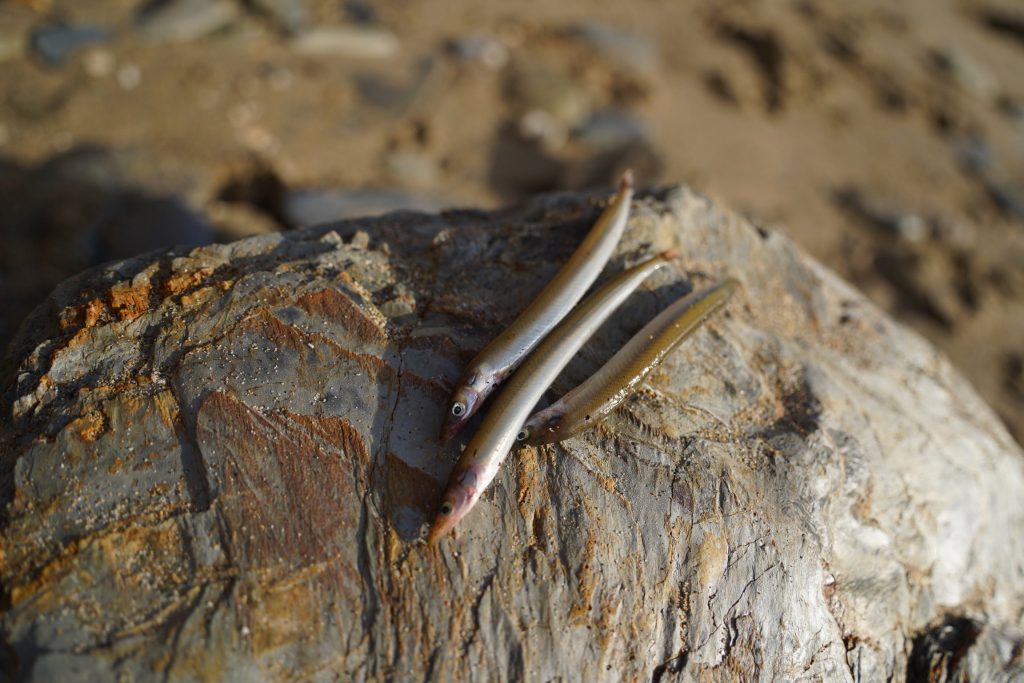
4. Sandeel
There are two species of sandeel that are used as bait: lesser sandeel (small sandeel) and ‘lance’ or ‘greater sandeel’. The lance tend to be used as whole fish baits for bigger fish like huss. The smaller sandeel are a summertime fishing staple. Sandeel is a highly versatile bait that is suitable for a wide range of species including pollock, rays, bass, garfish, turbot, brill, and huss. They are often used for float fishing, because then you’re presenting fish with sandeel at the depth of water they expect to see them in.
For a lot of sea fish species, sandeel are an abundant food source. Cod will feed heavily on sandeel straight from the mudflats where they live up estuaries at certain times of year.
To maximize the effectiveness of sandeel as bait, some like to clip off the head and end of the tail to release its scent trail. The flesh is very firm, which means sandeel hold the hook well. Freezing sandeel and taking it with you semi-frozen makes it even firmer. It’s a great bait for longer casting distances due to its tendency to hold the hook. That said, after threading the sandeel through your hook, only baiting elastic will ensure it stays put.
As usual, fresh sandeel makes a better bait than stale sandeel.
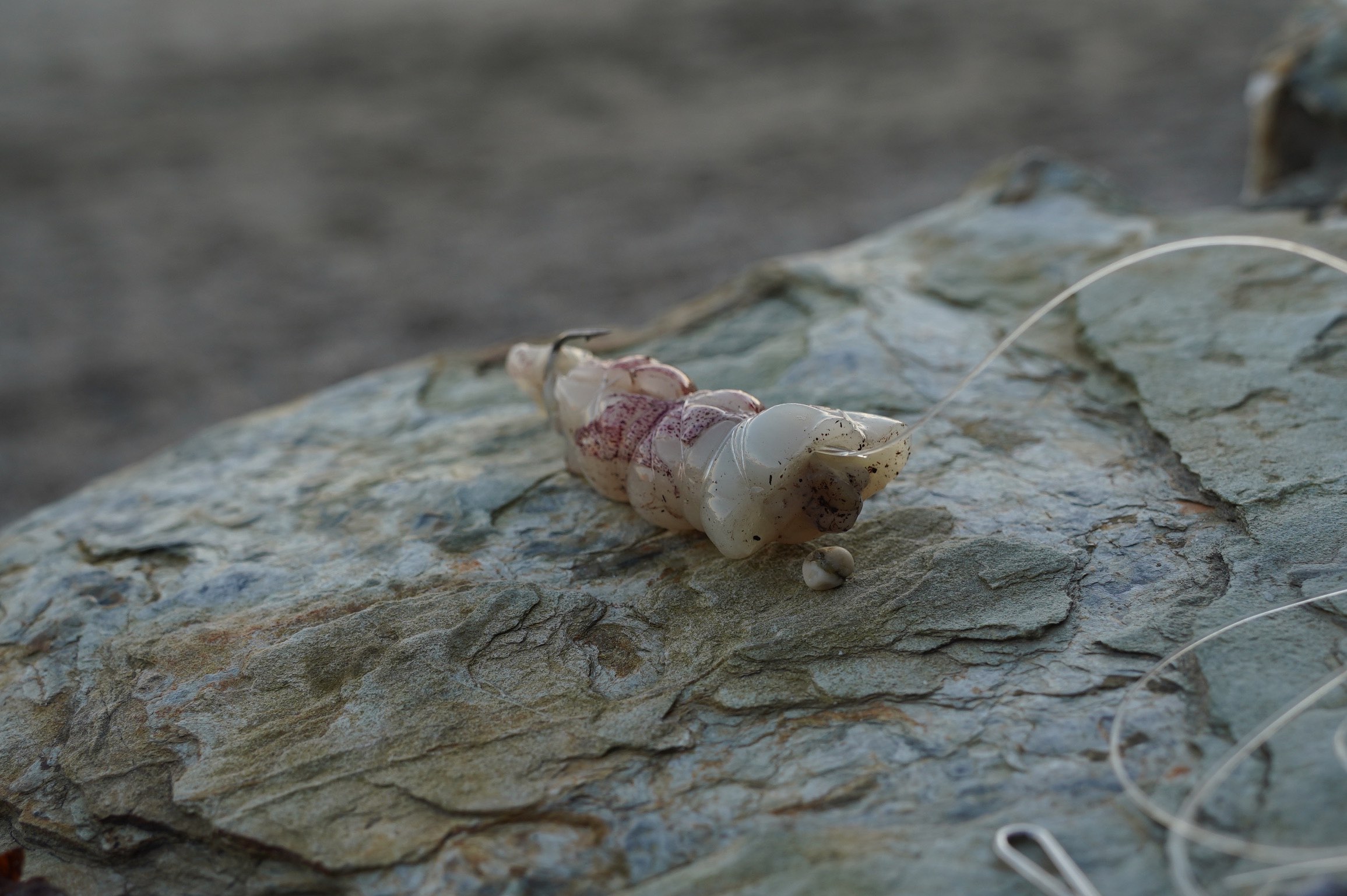
5. Squid
Squid is another popular and effective bait. Squid and cuttlefish are fairly plentiful in British waters and make up a significant amount of the diet of a large number of species. It’s especially effective in Autumn and Winter when squid come inshore. You can find squid in frozen form at fishing tackle shops or fresh from fishmongers or supermarkets. The firm white flesh of squid stands up well to casting and most species found around the British Isles can be caught on squid baits.
For smaller species, reach for small thin strips of squid. The white colour helps the bait stand out in murky water, and in clear water may make the bait look more ‘fish-like’. For larger species like cod, big bass, and conger eels, a full squid is the way to go. These are rigged on big hooks and must be tied on with baiting elastic.
Although squid that has been washed and processed for human consumption (often sold as calamari) is effective, many anglers prefer to use unwashed or “dirty” squid (often sold as loligo squid). This is because they believe that washing removes some of the natural scents of the squid.
Squid can be refrozen and still works well.
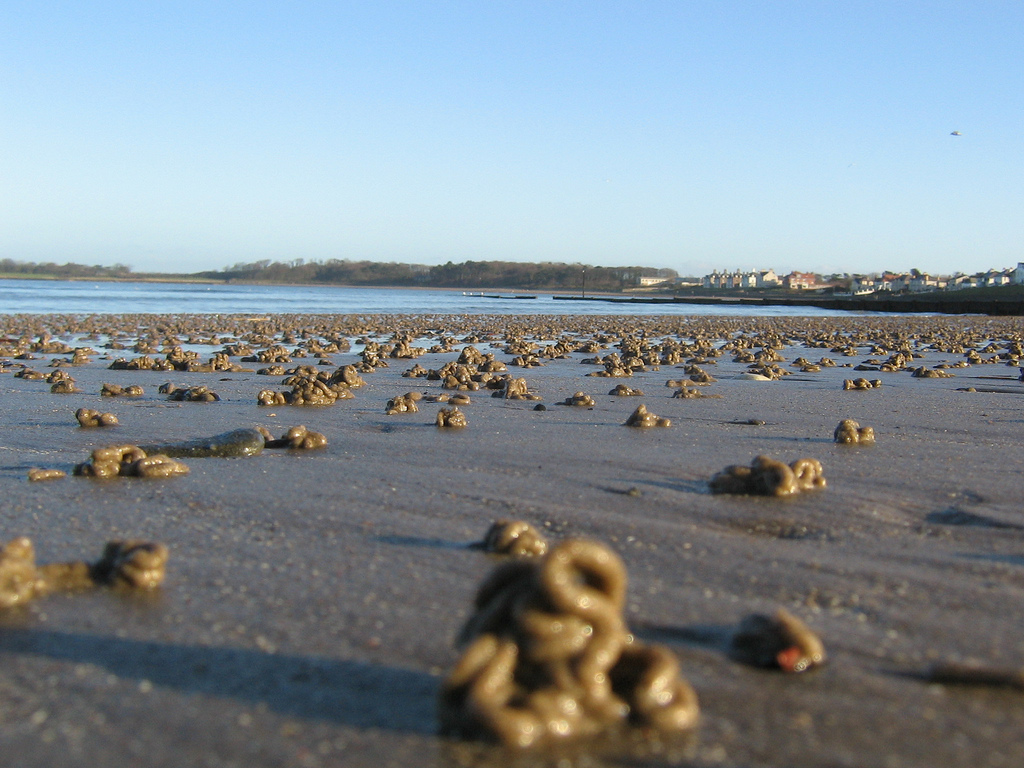
6. Lug worm (Blow lug)
Lugworm is another marine worm that is commonly used as bait. The key is to match the worm species to the ground you’re fishing, so you present fish with lugworm in areas where they’re feeding on lug and rag in areas where they’re feeding on rag. This type of worm is found in sandier areas than ragworm, but still also occupies somewhat muddy ground. It’s the most a popular worm bait for targeting cod in the UK.
Lugworm are juicier when they’re freshly dug but also more prone to bursting when they’re this fresh. This makes them useful for fishing at close range, for species such as bass. When lugworm are dehydrated y being left in the fridge, they shrink and become tough. This makes them better for longer range casting for cod. Again, changing the newspaper will keep them alive for longer as dead worms contaminate the rest.
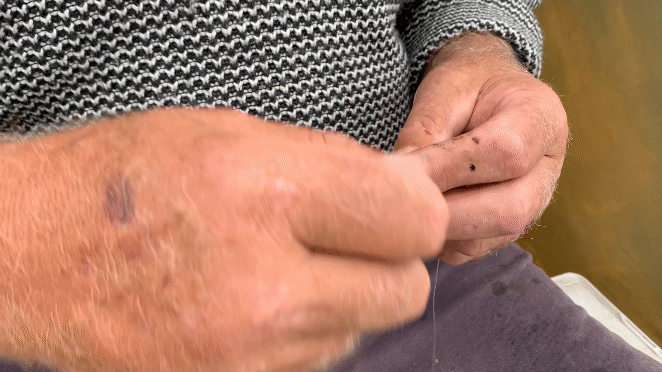
7. Black lugworm
Black lugworm is a distinct species that grows to 30cm and is black in colour. They’re rarer and are considered the best type of lugworm for fishing. These black lug can also be gutted and unlike blow lug, can be frozen. Black lug are useful when targeting larger species when you want a huge worm bait. There aren’t many demersal species that would turn their nose up at that.
Above is a gif of black lug being wrapped in baiting elastic. This is done thoroughly, with the hook eventually wrapped underneath the baiting elastic to hold the bait onto the hook. Wrapping the black lug in baiting elastic doesn’t just prevent it from falling off the hook, it stops crabs and fish from pulling the bait apart, which prevents us from fishing for 20 minutes with no bait…
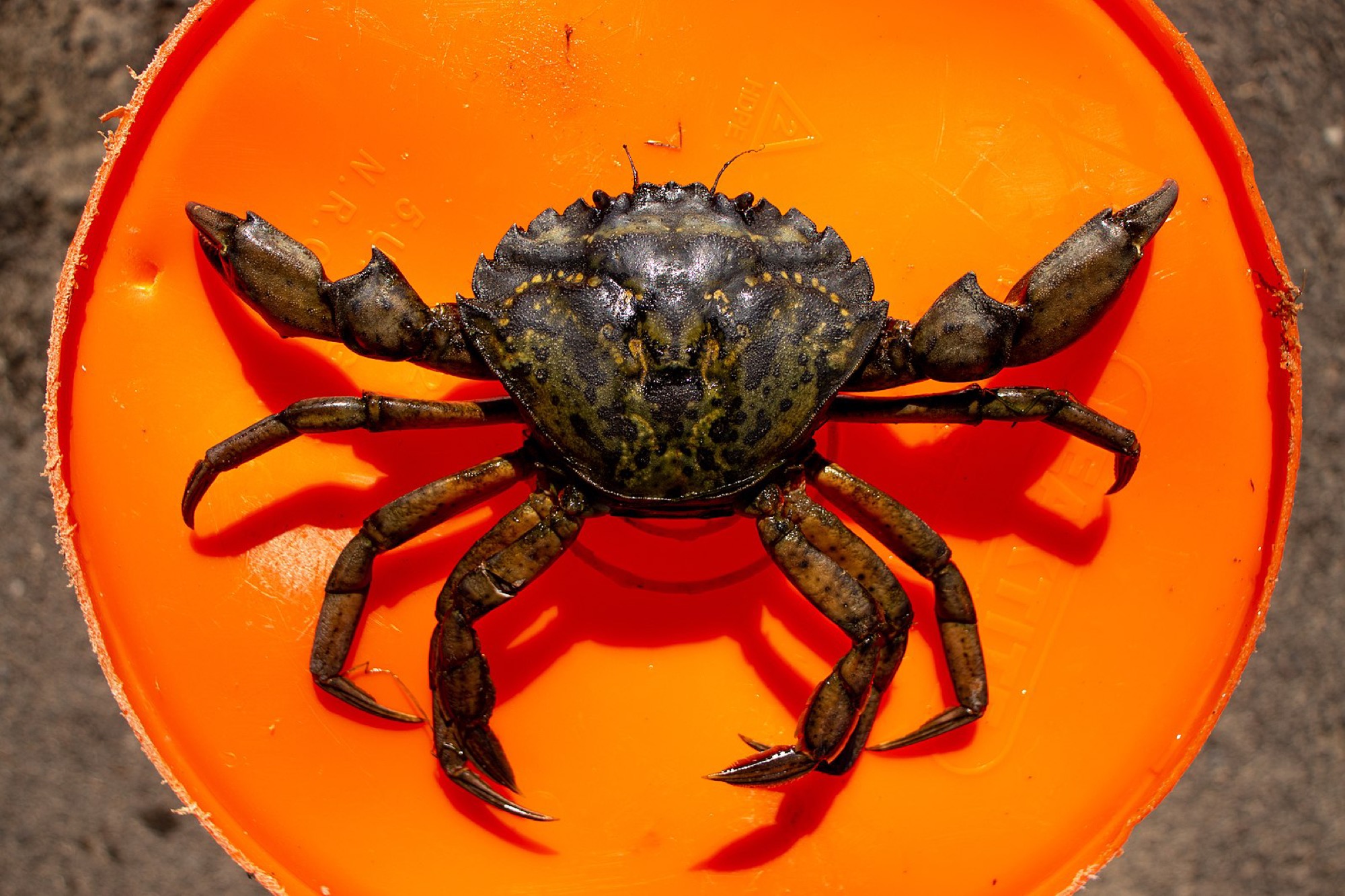
8. Peeler crab
Peeler crab are crabs which have just shed their hard shell in order to grow larger. This makes them easier to digest for fish and therefore more nutritious and delicious!
Peeler is a highly effective bait for targeting species such as smoothhounds, bass, cod, and rays. It’s considered a supreme bait when beach casting in particular. These crabs have a powerful scent during the peeling process which is highly attractive to fish. However, peeler crab can be difficult to obtain and is expensive. You can collect your own or buy them frozen.
When using peeler crab, it is essential to use fine elastic to hold it in place. This will help prevent the fish from easily pulling off the crab. Using half a live crab instead of a whole one will reduce costs while still providing a highly effective bait.
9. Common shore crab / hard crabs
Regular small hardback crabs also make for a good bait, you just need to remove the hard top part of the shell and the gills. This will leave the soft part of the crab exposed. Some anglers prefer to leave the legs on, but you can also cut the crab in half to use both parts as separate hook baits. It’s important to match the hook size to the bait, and when you hook the crab, you want to wrap it around the hook shank with some of the bend and point showing. That’s how you’ll get the best results!

10. Shellfish baits
The most commonly used shellfish baits are mussels and razorfish, but cockles, winkles, limpets and whelks can also be used. These molluscs are taken out of their shells, and carefully rigged with baiting elastic to ensure they hold to the hook. One of the advantages of shellfish is their effectiveness after a storm or period of bad weather when shellfish are dislodged from rocks and are a readily available food source for fish.
You can dig for your own shellfish. The easiest to collect by far are limpets, which also hold the hook extremely well and are highly sustainable. Cockles, winkles, limpets and whelks can also be used as bait, and they are best used to add bulk to cocktail baits, rather than on their own.
BONUS – Bread for bullet
When it comes to fishing for mullet, none of the usual principles of sea fishing seem to apply! In many fishing spots, bread proves to be the most effective option. Fish baits may work in some areas, but chunks of doughy bread mixed in with other flavours are the go-to bait choice for mullet. Not only is bread a great hook bait, but it also doubles as an excellent groundbait for scattering to get the mullet on the feed.
For the best results, opt for cheaper brands of bread, as they tend to be more doughy and stay on the hook better than pricier, healthier options.
Just mash several loaves of bread into a bucket and mix in some sea water, fish scraps, and fish oil. You want the mixture to be pasty, with lumps, but not too wet. Throw in several handfuls of the groundbait where you plan to fish and wait for the mullet to show. Once they do, start fishing and add more of your bread mixture in small amounts at regular intervals. The key is to keep feeding the fish little and often, so they stay in the swim and near your hook bait. Coarse fishermen will be more at home with mullet fishing than us sea guys…
Tips for bait fishing
Scent trails
A lot of bait is about scent. The scent trail. This is the trail in the water left behind by the juices and blood from your bait in the water. Fish follow these like cartoon characters following smoke to a kitchen… Especially at night. Fresh bait is probably better in this regard but frozen bait is convenient and effective. However, once a frozen bait has been defrosted, refreezing it again might mean you lose some of the juices as they might have leaked out as the bait thawed.
Bait presentation
Proper presentation mostly means having the hook point visible but the shank of your hook concealed. You then want your bait to be the right size for the fish you’re targeting, on the right sized hook. We have a separate article on hook types and hook sizes. For big mackerel baits or whole lance sandeel or squid, larger hooks are needed. For worm baits, it’s more common to use smaller and finer hooks.
Some species are picky feeders in certain moods (bass), others are not at all (dogfish). But rigging your baits carefully and tying them with baiting elastic will also help keep your baits on the hook so they don’t fall of during the cast. As your bait hits the water, a poorly rigged bait will come off the hook. The further you want to cast and the heavier your leads, this is a problem. If you’re using a worm bait, tipping the hook with a firm slither of squid or mackerel to hold the worm in place works great.
A quick note on storing your baits
If not stored properly, worm baits become lifeless and fish baits start to become mushy or dry out. Sea gulls are also a problem! To ensure that your baits are always fresh and effective, it’s handy to store them well. A simple bucket works: A bucket filled with sea water is a great way to store fishing baits. This method keeps the baits out of the sun and away from seagulls. When you arrive at your fishing location, fill the bucket a third of the way up with sea water and place fish baits that wrapped in clingfilm inside.
Wrapping fish baits in cling film is another way to prolong their freshness. The moisture from the baits will help keep them from drying out. For worm baits, damp newspaper is best. You don’t need a cool box except during heat waves in the UK, but some like to have one.
Tronix Pro Rods
Find the best tronix pro rod for each purpose We got in touch with Gem…
Anyfish Anywhere Rod Range Explained
Exploring the Anyfish Anywhere Rod Range: A Comprehensive Guide Anyfish Anywhere has been a recognised…
Sea Fishing lines
Sea Fishing lines Your line is perhaps more important even than your reel or your…
The best beach casting reels, and how to find yours
The best beach casting reels, and how to find yours Beach casting reels have to…

